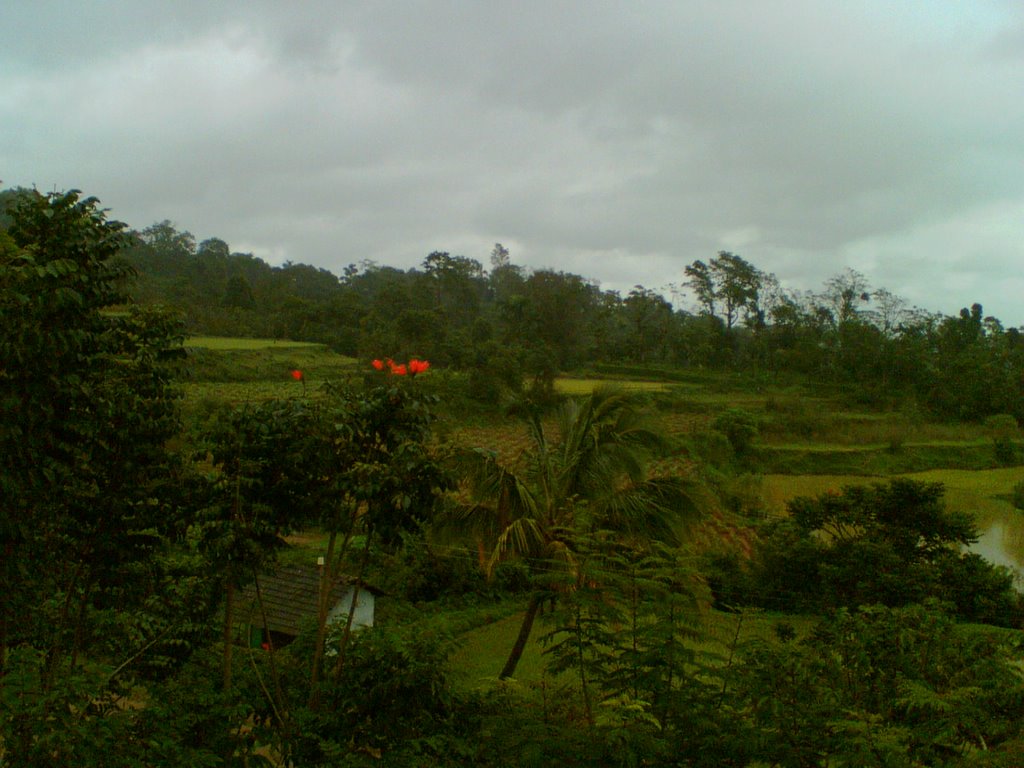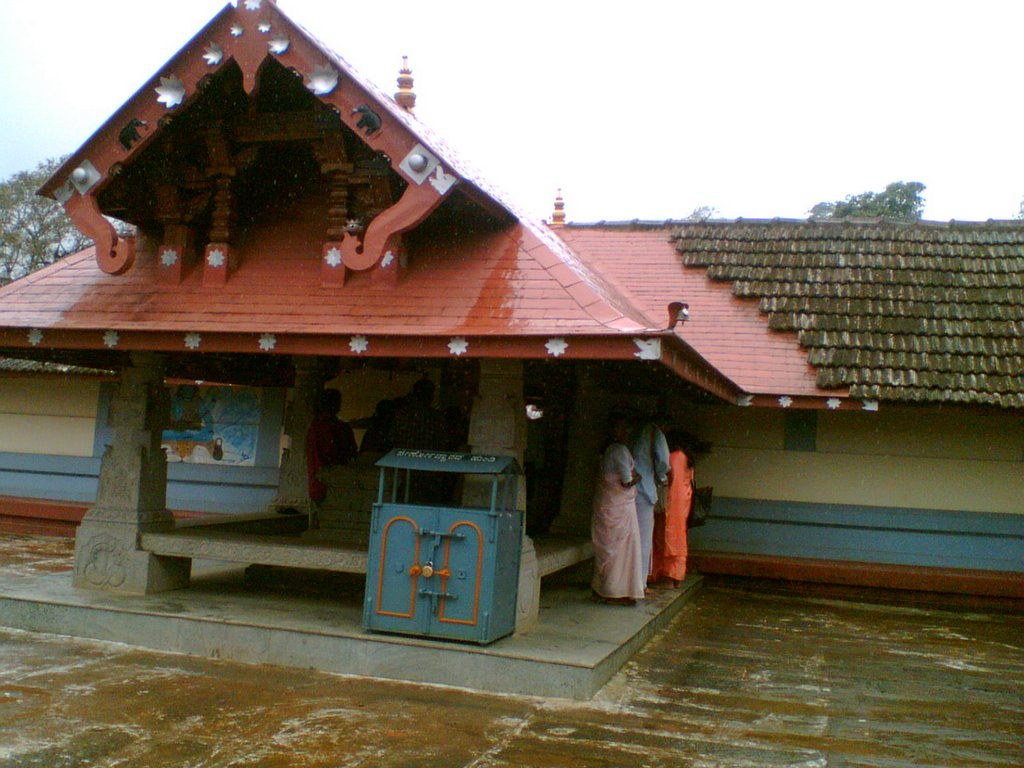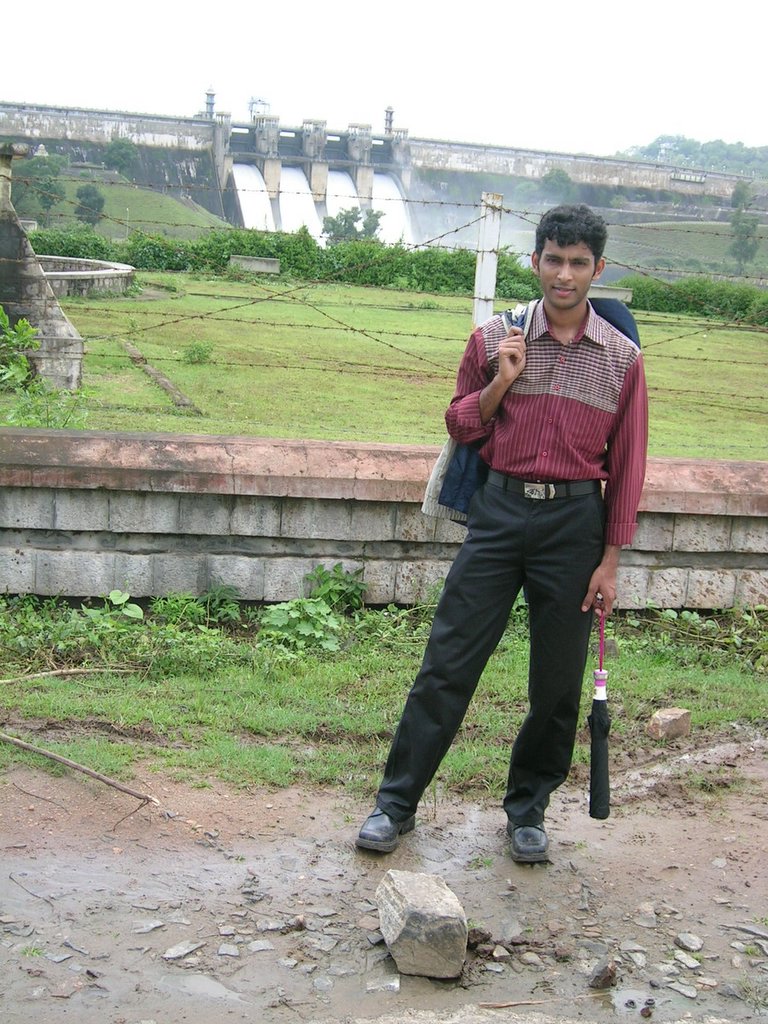Cock fight is a famous folk sport in the region of undivided South Canara, covering present Managalore, Udupi and Kundapura. It’s called Kori Katta in Tulu and Koli Pade in Kundapura kannada. People usually grow different breeds of cocks just for the purpose of this folk sport, and many are very passionate about the game. The varieties of breeds include, Kembera, Kadla etc.
 Normally it’s for the entertainment purpose usually held after some special events such as the on Diwali night, After the Kambala etc. Jathre Katta is observed during town fairs and nithya katta takes place near arrack outlets on a full moon or Amavasye. Under the third type, "Sodthi katta", a dual between two individuals is settled through the cock fight. The venue of the cock fight is called "kala". People gather in, with their fighter cocks when the sun is about to start going down in the west side of the sky. Some people do come there with out a fighter cock, and they bet money on the cocks, kind of Gambling. This is normally not the tradition of cock fight, but people added this to make some money, police often ride such places where gambling happen on these cock fights, but it still persist.
Normally it’s for the entertainment purpose usually held after some special events such as the on Diwali night, After the Kambala etc. Jathre Katta is observed during town fairs and nithya katta takes place near arrack outlets on a full moon or Amavasye. Under the third type, "Sodthi katta", a dual between two individuals is settled through the cock fight. The venue of the cock fight is called "kala". People gather in, with their fighter cocks when the sun is about to start going down in the west side of the sky. Some people do come there with out a fighter cock, and they bet money on the cocks, kind of Gambling. This is normally not the tradition of cock fight, but people added this to make some money, police often ride such places where gambling happen on these cock fights, but it still persist.
 So without gambling the traditional cock fight in the rural South Canara goes like this. People bring their own Cocks and they tie a tiny knife called “baal” to their legs, and then allowed to fight with each other. Process of selecting the pair for fight called as "Jodi Naadunu" is followed by the actual fight "Kori Muttunu". The fight which does not exceed more than three rounds is decided, when one of the cock runs away or is injured. The winning Cocks owner will get both the cocks in Onti Katta, which will be considered as victory for that evening, and its called as “Anka”. There is a special type of Knock Out fight where they are allowed to fight till one dies. People are so passionate about this folk game is that the venue and dates are decided by a dedicated panchanga for this called as “Almane Kukkate Panchanga”.
So without gambling the traditional cock fight in the rural South Canara goes like this. People bring their own Cocks and they tie a tiny knife called “baal” to their legs, and then allowed to fight with each other. Process of selecting the pair for fight called as "Jodi Naadunu" is followed by the actual fight "Kori Muttunu". The fight which does not exceed more than three rounds is decided, when one of the cock runs away or is injured. The winning Cocks owner will get both the cocks in Onti Katta, which will be considered as victory for that evening, and its called as “Anka”. There is a special type of Knock Out fight where they are allowed to fight till one dies. People are so passionate about this folk game is that the venue and dates are decided by a dedicated panchanga for this called as “Almane Kukkate Panchanga”.
Photo Credits : Pictures are taken from internet (1), (2)
 Normally it’s for the entertainment purpose usually held after some special events such as the on Diwali night, After the Kambala etc. Jathre Katta is observed during town fairs and nithya katta takes place near arrack outlets on a full moon or Amavasye. Under the third type, "Sodthi katta", a dual between two individuals is settled through the cock fight. The venue of the cock fight is called "kala". People gather in, with their fighter cocks when the sun is about to start going down in the west side of the sky. Some people do come there with out a fighter cock, and they bet money on the cocks, kind of Gambling. This is normally not the tradition of cock fight, but people added this to make some money, police often ride such places where gambling happen on these cock fights, but it still persist.
Normally it’s for the entertainment purpose usually held after some special events such as the on Diwali night, After the Kambala etc. Jathre Katta is observed during town fairs and nithya katta takes place near arrack outlets on a full moon or Amavasye. Under the third type, "Sodthi katta", a dual between two individuals is settled through the cock fight. The venue of the cock fight is called "kala". People gather in, with their fighter cocks when the sun is about to start going down in the west side of the sky. Some people do come there with out a fighter cock, and they bet money on the cocks, kind of Gambling. This is normally not the tradition of cock fight, but people added this to make some money, police often ride such places where gambling happen on these cock fights, but it still persist. So without gambling the traditional cock fight in the rural South Canara goes like this. People bring their own Cocks and they tie a tiny knife called “baal” to their legs, and then allowed to fight with each other. Process of selecting the pair for fight called as "Jodi Naadunu" is followed by the actual fight "Kori Muttunu". The fight which does not exceed more than three rounds is decided, when one of the cock runs away or is injured. The winning Cocks owner will get both the cocks in Onti Katta, which will be considered as victory for that evening, and its called as “Anka”. There is a special type of Knock Out fight where they are allowed to fight till one dies. People are so passionate about this folk game is that the venue and dates are decided by a dedicated panchanga for this called as “Almane Kukkate Panchanga”.
So without gambling the traditional cock fight in the rural South Canara goes like this. People bring their own Cocks and they tie a tiny knife called “baal” to their legs, and then allowed to fight with each other. Process of selecting the pair for fight called as "Jodi Naadunu" is followed by the actual fight "Kori Muttunu". The fight which does not exceed more than three rounds is decided, when one of the cock runs away or is injured. The winning Cocks owner will get both the cocks in Onti Katta, which will be considered as victory for that evening, and its called as “Anka”. There is a special type of Knock Out fight where they are allowed to fight till one dies. People are so passionate about this folk game is that the venue and dates are decided by a dedicated panchanga for this called as “Almane Kukkate Panchanga”.Photo Credits : Pictures are taken from internet (1), (2)




































